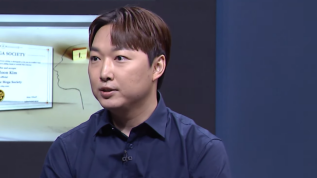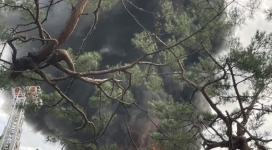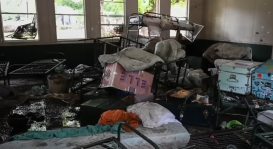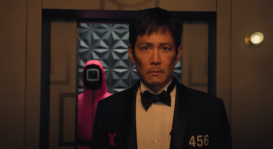In an intriguing historic gathering, 115 cardinals from six continents and 52 countries filled the St. Peter’s Basilica celebrated a midmorning Mass at St. Peter’s Basilica before segregating themselves in the Sistine Chapel to elect a pope who will inherit John Paul II’s mantle and guide the world’s 1.1 billion Roman Catholic into a new era.
Mixing ultra modern technology with unique election, the conclave will start at 4:30pm (1430 GMT). The Cardinals were to take oath of secrecy, hear a meditation from senior cardinal and decide whether to take a first vote or wait until Tuesday while sitting atop a false floor hiding electronic jamming devices designed to thwart eavesdroppers.
Thousands of pilgrims and tourists were expected to converge on St. Peter’s Square to watch the chapel chimney for the white smoke that ultimately tell the world that the church’s 265th pontiff has been elected. The stove in the chapel also will billow black smoke to mark any inconclusive vote.
Although the conclave could last for days, a pope can be chosen as early as Monday evening. In the meantime, the cardinals were to decide whether to begin voting on Monday evening or wait until Tuesday morning. If they decide to wait a day, they will host four rounds of voting – two in the morning, two in the afternoon – on Tuesday and every day until a candidate gets two-thirds support: 77 votes. If they remain deadlocked late in the second week of voting, they can vote to change the rules so a winner can be elected with a simple majority: 58 votes, according to AP.
According to Vatican spokesman Joaquin Navarro-Valls said the special smoke could be seen at about noon and about 7pm on each day of voting by the cardinal electors, all of whom are under age 80. After the new pope is chosen, the Vatican will ring bells.
As in medieval times, the cardinals will be banned from communicating with the outside world. At their quarters where they stay, cell phones, newspapers, radios, TVs and internet connection were all conspicuously missing. This is following the new rules laid down by John Paul II to minimize the chances of news influencing their secret deliberations and to prevent leaks to the outside world.
No conclave has lasted for more than five days, including the one that made Karol Wojtyla pope in October 1978 took eight ballets over three days, according to Reuters.
The cardinals faced two choices between an administrator serving as a “transitional’ pope while the church takes over, or a younger dynamic pastor and communicator who could continue legacy of left by the late pontiff. Not only can the potential pope be from Europe, where the majority of candidates are from, the new pope can be from Latin America or elsewhere in the developing world where the church is growing.
Meanwhile, other issues will be discussed prominently in the conclave including priest sex-abuse scandals; coping with chronic shortage or priests and nuns in the West; halting the stream of people leaving church whose teaching they no longer find relevant; and improving dialogue with the Islamic world, according to the Vatican.
Beyond these issues at hand, the decision can be expected relatively quickly predicted Vatican experts. White smoke will rise above the Sistine Chapel Wednesday evening or Thursday.







